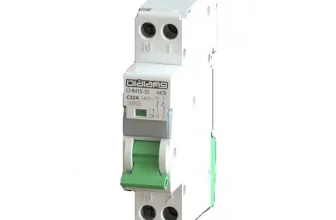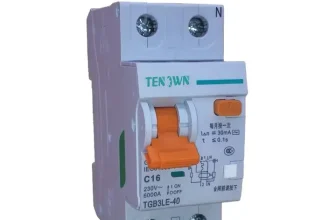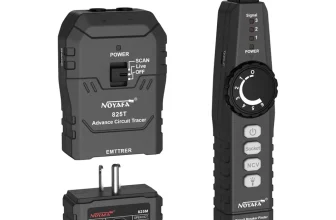A Shunt Trip Breaker is a type of electrical circuit breaker designed
to trip or disconnect its load when supplied with an external signal.
Apart from the regular function of traditional circuit breakers, which
cuts off electric power whenever electrical wiring in a building has too
much electric current flowing through it, the Shunt Trip Breaker has an
additional operating mechanism. This mechanism is a built-in magnetic
coil that, when energized, causes the breaker to trip and disconnect the
load. These special circuit breakers are designed to ensure that the
circuit is turned off remotely, depending on certain conditions,
enhancing the safety and protection features of the electrical system
they are integrated into.
Importance in an Electrical
System
Shunt trip breakers play a crucial part in the safety and efficient
operation of an electrical system. They serve a protective role by
interrupting the electrical circuit in instances of overcurrent or short
circuits, thus preventing equipment damage and reducing the risk of
electrical fires. Also, they provide a unique feature of remote
tripping, which allows them to cut off electrical power from a circuit
swiftly upon receiving a signal from an external source.
Apart from safeguarding against electrical faults, shunt trip
breakers are also instrumental in emergency scenarios. They can be wired
to emergency systems such as fire alarms or gas detection systems to
instantly cut off electrical power when danger is detected, further
enhancing safety. By doing so, they function as a guardian of the
electrical system, ensuring the user’s safety and the longevity and
efficiency of the equipment.
Hence, the use of shunt trip breakers has become an essential
standard in modern electrical system designs, impacting industries and
homes alike with a multi-faceted solution towards electrical safety and
efficiency.
Understanding the Working
Mechanism
Components of a Shunt Trip
Breaker
A Shunt Trip Breaker is composed of several important components that
work together to ensure its efficient functioning.
Firstly, the most crucial part of this device is the breaker itself.
This is composed of a switch, which effectively disrupts the flow of
electrical current when it is tripped.
Secondly, it features a shunt coil, which is an electromagnetic coil
that is responsible for the trip operation. When the shunt coil receives
a voltage, it responds by emitting a magnetic field. This magnetic field
activates the trip mechanism within the breaker, causing an interruption
in the circuit.
Thirdly, there are trip terminals featured in the shunt trip breaker.
These terminals are what the shunt coil is connected to. When a voltage
is applied to these terminals, it allows for the coil to be
energised.
Lastly, it is worth mentioning the presence of an accessory cover.
This protects the shunt trip breaker from any physical damage, ensuring
its longevity and reliability.
Each of these components have an integral role in the operation of a
shunt trip breaker, contributing to its primary function of preventing
electrical circuits from overloading and causing potential damage or
hazardous situations. Understanding these components not only helps in
comprehending how a shunt trip breaker functions, but also comes handy
while troubleshooting any potential issues or when maintenance is
required.
Detailed
Explanation of Its Working Mechanism
A shunt trip breaker operates much like a normal circuit breaker with
an added functionality of being able to be remotely triggered. When it’s
in normal operation, the shunt trip breaker monitors the flow of
electricity through a circuit. When it detects an overload or a short
circuit, it automatically interrupts the flow of electricity, thus
preventing damage to the equipment or wiring.
The differentiating factor of a shunt trip breaker is the presence of
an additional shunt coil. This coil is connected to an external trip
signal source, like a fire alarm, gas detector, or other safety system
controls. When these external systems are triggered, they send a signal
to the shunt coil. This signal generates a magnetic force that triggers
the trip mechanism of the circuit breaker, causing it to cut off the
power supply instantly. This immediate intervention minimizes potential
damage to property or harm to individuals due to emergencies like fires
or gas leaks.
In simple terms, a shunt trip breaker waits in standby until a
problem is detected. Then, either through an internal discovery of a
fault such as a power overload or external signal like a heat sensor,
the breaker gets activated and disconnects the electricity supply,
thereby protecting the electrical system from further damage. After the
fault has been addressed and the signal end, the breaker can be manually
reset back to the operational mode.
Applications of Shunt Trip
Breaker
Commercial and Industrial
uses
Shunt trip breakers play a crucial role in many commercial and
industrial contexts due to their advanced safety capability. In
commercial settings like shopping malls, cinemas, hospitals, and
restaurants, they are employed to quickly disconnect electrical circuits
in case of emergencies. If a fire occurs in these premises, the shunt
trip breaker can instantly cut off the electrical supply, preventing
electrical fires and halting any further damage to the electrical
system.
Industrial environments, on the other hand, present a multitude of
electrical hazards. To mitigate these, businesses often rely on shunt
trip breakers. Industries like oil and gas, mining, and manufacturing,
where explosive materials and volatile substances are abundant, use
shunt trip breakers to minimize the possibility of electrical
malfunctions igniting these substances. In the event of abnormal current
flow or a signal from a hazard detection system, these breakers cut off
the power, providing an imperative layer of added safety.
Additionally, in buildings that have elevators or escalators, shunt
trip breakers are typically installed to promptly cut-off power during
any mechanical failure or abnormality in the system. The ability of
these breakers to respond to ancillary signals, not just to circuit
conditions, makes them an indispensable tool in diverse commercial and
industrial setups.
Residential uses
In residential settings, shunt trip breakers play a critical role in
ensuring safety and the smooth operation of many household appliances.
They are commonly integrated into the electrical systems of houses that
have high energy consuming devices like electrical heaters, air
conditioners, and heavy-duty kitchen appliances.
One common application is in home-based fire suppression systems
where a shunt trip breaker is used to cut off the power supply to a
particular area in case of a fire outbreak. This prevents the fire from
spreading and causing more damage. These types of breakers are crucial
for homes equipped with basement or garage heating systems that could
potentially overheat and cause a fire.
Another key residential application is in electric stoves, which are
prone to overheating. By installing a shunt trip breaker, the power
supply to the stove can be automatically cut off if there’s an
electrical fault, significantly reducing the risk of kitchen fires.
Moreover, for homes with large, inground swimming pools, shunt trip
breakers offer a layer of protection. They can prevent accidental
electrical shocks by disconnecting the power to the pool’s lighting and
pumping system during an electrical fault or power surge.
Lastly, they can be invaluable for homes with advanced home
automation systems. By allowing for remote power disconnection during
emergencies, shunt trip breakers can significantly enhance the safety
and efficiency of the smart home infrastructures.
In a nutshell, while their usage in residential applications might
not be as vast as in commercial or industrial settings, shunt trip
breakers are undoubtedly an important addition to any home electrical
system.
Types of Shunt Trip Breakers
Classification
Based on their Functionality
Shunt trip breakers can be classified on the basis of their
functionality into several types.
First, we have the Ground Fault Circuit Interrupter (GFCI) shunt trip
breaker. This type of breaker is specifically engineered to cut off
electrical power when it detects a ground fault – an unintentional
electrical path between a source of current and a grounded surface. This
helps in avoiding dangerous electric shocks.
Next, there’s the Arc Fault Circuit Interrupter (AFCI) shunt trip
breaker. It stops the flow of electricity when an arc fault is detected-
a high power discharge of electricity that jumps between two or more
currents. The main purpose here is to prevent electrical fires caused by
unsafe home wiring conditions.
We also have the Combination Arc Fault Circuit Interrupter (CAFCI)
shunt trip breaker. This type combines the functions of GFCI and AFCI
breakers, providing added protection against both ground faults and arc
faults.
Lastly, there’s the Thermal Magnetic shunt trip breaker which uses a
bimetallic strip to detect overcurrent situations. When excessive
current flows, the strip heats up and bends, triggering the trip
mechanism and interrupting the current flow.
Each of these shunt trip breakers provide unique protective features
depending on the specific electrical conditions and requirements. When
choosing a shunt trip breaker, it’s crucial to consider which type best
suits your needs.
Classification Based
on the Load Capacity
Shunt trip breakers can be classified based on their load capacity,
which essentially refers to the amount of electrical current that can be
safely managed without causing any harm to the system. This
classification is crucial because shunt trip breakers have to be chosen
carefully depending on the electrical demand. Failure to adhere to this
can result in breaker tripping or even catastrophic failure in severe
cases.
The low-capacity breakers primarily serve to protect low-demand
electrical systems, like residential lighting circuits, which typically
handle a fraction of one ampere. These low-capacity breakers are
designed to trip and stop the electrical current flow quickly, once the
current exceeds the limit predefined for safe operation.
Medium-capacity breakers are used in systems with a higher demand for
electrical power but still within a manageable threshold. Examples
include residential power sockets, which typically handle between one
and ten amperes. The shunt trip function here may protect appliances
from damage in case of a sudden spike in electric current.
High-capacity shunt trip breakers find their operation predominantly
in heavy-duty industrial and commercial applications. These breakers are
designed to manage significant electrical loads that often reach up to
thousands of amperes. Given their high load capacity, these breakers are
often used to protect large electrical equipment and systems such as
large HVAC units and other industrial machinery.
Therefore, choosing the right kind of shunt trip breaker based on the
load capacity is essential for ensuring operational safety as well as
the longevity of your electrical system. Be sure to consider your
electrical needs thoroughly before making the selection.
Advantages of a Shunt Trip
Breaker
Safety Benefits
Shunt trip breakers come loaded with significant safety benefits.
They are designed to offer exceptional protection in high-stakes and
critical situations where standard circuit breakers might fail. The
ability of these innovative devices to quickly and effectively interrupt
power is invaluable in preventing electrical fires and protecting
electrical systems from catastrophic failures.
One of the primary safety advantages is that shunt trip breakers can
be linked with other safety and security systems such as fire alarms and
detection systems. When the alarm or detector senses danger, it triggers
the shunt trip breaker to disconnect the power supply immediately. The
result is a reduced risk of fire breaking out due to electrical fault or
overload.
Additionally, some shunt trip breakers have dedicated heat detection
functionality. This feature allows them to cut off the electrical supply
when they detect a certain degree of heat that could indicate an
electrical fault.
Another advantage, particularly in industrial or commercial settings,
is the prevention of accidental machine startup. In case of any
maintenance teardown or equipment update requiring the machine to be
off, a shunt trip breaker guarantees that the machine won’t turn on
unexpectedly, preventing accidents and ensuring the safety of the
workers.
In nutshell, the safety benefits offered by shunt trip breakers are
manifold, with each feature designed to mitigate specific risks
associated with electrical power systems. They serve as a reliable
safeguard, going far beyond the capabilities of traditional circuit
breakers.
Cost and Energy Efficient
The design and function of the Shunt Trip Breaker make it a
cost-effective and energy-efficient solution for any electrical system.
From an economic perspective, the initial cost of purchasing and
installing a Shunt Trip Breaker can be offset quickly by the savings
they provide over time. This is largely due to their superior level of
energy management.
Shunt Trip Breakers have the potential to decrease energy
consumption, reduce costs and promote the efficient use of energy. They
accomplish this by enabling precise control and monitoring of individual
circuits. They make it possible to triage power to where it’s needed
most, consequently avoiding wastage and ensuring optimal use of energy
across the entire system.
Moreover, Shunt Trip Breakers have the added bonus of being
relatively low-maintenance, which factors into their cost-efficiency.
Being robust and reliable, they require minimal maintenance – this
reduces the ongoing costs of repairs and replacements, thereby adding to
their value-for-money proposition.
Even though Shunt Trip Breakers might seem like a big investment up
front, their ability to conserve energy, reduce the risks of electrical
damages, and require less maintenance results in substantial cost
savings in the long run. These advantages make them a cost-effective and
energy-efficient choice for enhancing electrical safety and improving
power management in both residential and commercial settings.
How to Choose the
Right Shunt Trip Breaker
Factors to Consider
Choosing the right shunt trip breaker is not a decision to be taken
lightly, as it could significantly influence the safety and efficiency
of your electrical system. Here are some factors you should
consider:
- Load Capacity: It’s crucial to understand the electrical load
your establishment carries to select an appropriate shunt trip breaker.
The device you choose must be capable of handling the power volume
without causing any system disruptions. - Voltage Ratings: Shunt trip breakers are designed to work under
specific voltage conditions. Therefore, you must check the voltage
rating of your electrical system and choose a breaker that matches
it. - Manufacturer’s Reputation: Always opt for a breaker produced by a
reputable manufacturer. Renowned manufacturers will likely offer better
quality, reliability, and after-sales service. - Type of Loads: Matching your breaker with the type of loads it
will control is also important. If your system predominantly uses
resistive loads, such as heaters, choose a breaker designed for it. For
inductive loads like motors, specific types of breakers are more
suitable. - Environmental Conditions: If your system operates in harsh
conditions, such as high temperatures or humidity, you need a shunt trip
breaker built to withstand such environments. Not all breakers can
endure extreme conditions, so this consideration is vital. - Cost: Financial constraints are also a factor. However, remember
that cheaper may not always mean better. You must ensure that the
breaker offers the required functionality and reliability, even if it
comes at a higher cost. - Certifications and Standards: Finally, look for certifications
and standards met by the shunt trip breaker. Compliance with
international standards guarantees a certain level of safety and quality
of the device.
Mistakes to Avoid
While choosing a shunt trip breaker, it’s important to steer clear of
certain common mistakes to ensure safe and efficient operations. Below
are a few missteps to avoid:
- Incorrect Size Selection: Do not underestimate the importance of
selecting the right size of a shunt trip breaker. The size should
correspond to the power load it needs to handle. Picking a size too
small or too big can lead to inappropriate tripping or overheating,
respectively. - Neglecting Load Type: A frequent mistake is overlooking the type
of load the breaker will manage. Be it resistive, inductive, or
capacitive load, each requires a different type of breaker. Disregarding
the load type can lead to the breaker failing to trip during an
overload. - Ignoring Local Regulation and Standards: Each region has specific
standards and regulations related to electrical installations. Failing
to adhere to these rules not only can cause electrical accidents but
also might result in legal issues. - Opting for Low-Quality Products: Trying to save money by choosing
low-cost, substandard electrical devices is another common blunder.
Always prioritize quality over price when it comes to safety devices
like shunt trip breakers. - Overlooking Professional Assistance: It might seem tempting to
install and configure the breaker yourself, but without proper knowledge
and skills, this might result in wrong installation leading to
malfunctioning or even accidents.
Avoiding these mistakes while choosing a shunt trip breaker will
ensure a more reliable, efficient, and safe electrical system in your
establishment.
Installation
and Maintenance of Shunt Trip Breakers
Guide to Installation
Installing a Shunt Trip Breaker requires technical skills and a good
understanding of electrical systems. Therefore, it’s typically
recommended that a licensed electrician perform the installation.
However, if you have the necessary knowledge, you can install it
yourself by following these general steps:
- Switch Off the Power: Before starting the installation, it’s
crucial to turn off the main power supply to the electrical panel. This
safety measure can protect you from electrical shocks. - Install the Breaker: Locate an empty spot in your electrical box
where the breaker will fit. Ensure it’s securely installed into the
panel. The breaker should snap into place, indicating it’s correctly
aligned. - Connect the Wires: Thread the respective wires through the holes
on the shunt trip breaker. Typical connection includes a hot wire, a
neutral wire, and a ground wire. Double-check to ensure these are
connected correctly and tightly. - Connect the Shunt Coil: The shunt trip breaker comes with an
additional wire connected to a coil within the device. This wire should
be connected to the device that will act as the triggering
source. - Test the Installation: Once all connections are securely in
place, restore the power to test the installation. Operate the
triggering device to ensure the shunt trip breaker interacts and
performs as expected.
Remember, safety is paramount when dealing with electrical devices.
Always wear protective gear and ensure the power is off during the
installation process. If you’re unsure about any step, don’t hesitate to
consult with a professional electrician.
Routine Maintenance Tips
Routine maintenance of shunt trip breakers is essential to ensure
their long-term functionality and safety. Here are a few tips to help
you in this regard:
- Regular Inspection: Shunt trip breakers should be routinely
checked for any signs of damage or wear and tear. This includes checking
for loose connections, discoloration, or any signs of
overheating. - Test Operation: The breaker should be tested periodically to
confirm it’s working correctly. This can generally be done by pressing
the test button on the breaker, which should cause the breaker to trip.
The breaker should then be reset to confirm it can be properly
reengaged. - Cleaning: Dust and dirt can accumulate in the breaker box over
time, potentially leading to issues. Make sure it’s kept clean, but
remember to always turn off the main power before cleaning to avoid
electrical shock. - Professional Help: Complex problems such as a breaker
consistently tripping, should be handled by a professional. Regular
servicing and professional inspections can also preempt potential
issues, extending the lifetime of the equipment. - Stay Vigilant: Always be mindful for any signs of electrical
issues such as flickering lights, unusual sounds from the breaker box,
or a burning smell. These could potentially indicate a problem with your
shunt trip breaker that needs immediate attention.
Remember, consistent maintenance not only helps prolong the life of
your shunt trip breaker but also ensures your electrical system is safe
and efficient.
Conclusion
Final
overview of the importance and benefits of Shunt Trip Breakers
Shunt Trip Breakers serve a pivotal role in today’s electrical
systems. Their prime function of shutting down a power system in
conditions of electrical faults helps avert devastating electrical fires
or equipment failures. With their diverse applications spanning from
commercial and industrial environments to residential settings, their
importance cannot be overstated.
These devices not only enhance safety but also offer cost and energy
efficiency. By ensuring selective tripping, they mitigate unnecessary
power outages. Further, their capacity to handle different load capacity
makes them a versatile component within diverse electrical systems.
Choosing the right Shunt Trip Breaker and ensuring its proper
installation and routine maintenance can help maximize its efficiency
and lifespan. By understanding the working mechanism, potential users
can make more informed decisions and troubleshoot minor issues.
In the evolving electrical landscape, the adoption of components like
Shunt Trip Breakers that contribute to improved safety and efficiency is
integral. Their role is critical and is likely to become more
significant as our dependence on electrical systems continues to
grow.
Encouragement
to adopt this technology for improved safety and efficiency.
Shunt trip breakers are fundamental components in modern electrical
systems. Their adoption brings about significant enhancements in safety
protocols and an increase in energy efficiency. Incorporating such
devices is particularly beneficial for high-risk establishments such as
industrial plants where electricity usage is extensive and potential
risk situations are prevalent. In residential applications, they offer
an added layer of protection and versatility in managing intricate
electrical systems.
Moreover, with rising energy costs, utilizing effective devices like
shunt trip breakers could result in substantial savings over time. Given
these substantial benefits, we recommend the transition to shunt trip
breaker technology in both commercial and residential environments.
While initial investments might appear significant, the long-term
operational advantages they confer from an energy, safety, and cost
perspective are well worth the investment.
This technology has the potential to help in achieving better
oversight and control over electrical systems, making our environments
safer, more efficient and cost-effective. Therefore, a shift towards
using shunt trip breakers should be considered as a positive stride
towards a safer and more efficient future.







